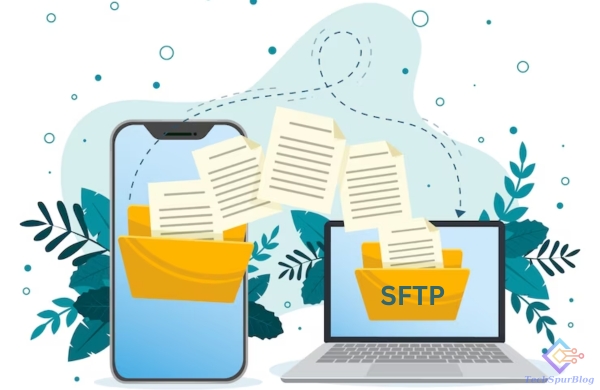
In the realm of digital communication and data sharing, security is paramount. The SSH File Transfer Protocol, commonly known as SFTP, plays a pivotal role in ensuring secure and efficient file transfers between computers within a network. Let’s go to the intricacies of SFTP, understanding how it works and the underlying technology that makes it so robust. You can also learn more at https://www.goanywhere.com/solutions/secure-ftp
Before we dive into SFTP, it’s essential to comprehend the underlying technology—SSH or Secure Shell. SSH is a network protocol centered on cryptography, which enables secure communication across networks that may otherwise lack security. It operates within a client-server architecture and employs a public key cryptography system to ensure authentication.
When using SSH, the server uses its private key to sign a hash of exchanged data, creating a unique signature. The client, in turn, calculates its hash of the data and verifies the server’s signature using its public key. If the signatures match, the connection is deemed secure and established.
SFTP, an abbreviation for SSH File Transfer Protocol, represents an expansion of the SSH protocol. It capitalizes on the secure environment SSH provides and takes file transfers to a whole new level of safety and reliability.
Also Read: Enhancing Windows Computer Security with PowerShell Settings
How does SFTP work?
Initiating the Connection: The process begins with a client, such as FileZilla, sending a connection request to the server. In return, the server transmits an SSH welcome message, including the highest protocol version it supports.
Algorithm Exchange: The client and server both share their respective supported algorithms and a modest quantity of random data, which serves as a session cookie. This exchange helps establish the parameters for the subsequent key exchange.
Key Exchange: Once the algorithms are in sync, the client initiates the key exchange using a mutually supported algorithm. The server replies by providing its parameters along with its public key.
Data Hashing and Signature: To guarantee the integrity of the data, the server computes a hash value for all the exchanged data and affixes its digital signature using its private key. The client performs a similar calculation and checks the signature against the server’s public key. If there’s a mismatch, the connection is terminated. Otherwise, the connection proceeds securely.
Encryption Begins: Starting here, all information shared between the client and server becomes encrypted using cryptographic keys generated from the parameters exchanged earlier. This guarantees that the data being transmitted stays both confidential and immune to tampering.
Authentication: With encryption in place, the client sends its user ID and password. The server authenticates the client and replies with access approval or denial.
SFTP Subsystem: If access is indeed approved, the client proceeds to ask the server to initiate the SFTP subsystem, and the server’s response will determine whether it is successful or unsuccessful.
File Operations: With the SFTP subsystem activated, the client can now send requests for various file operations, such as uploads, downloads, or directory listings. The server checks permissions for these operations and executes them accordingly, returning success or failure messages.
Also Read: How to Use an SPF Record to Protect Your Emails
Conclusion
SFTP, born as an extension of SSH, offers a secure and versatile method for transferring files across a network. It leverages the robust security measures of SSH, ensuring data remains confidential and untampered throughout the transfer process. Understanding the intricate dance of SFTP connections is essential for anyone seeking to maintain the integrity and security of their data transfers in today’s digital age.

Leave a Reply